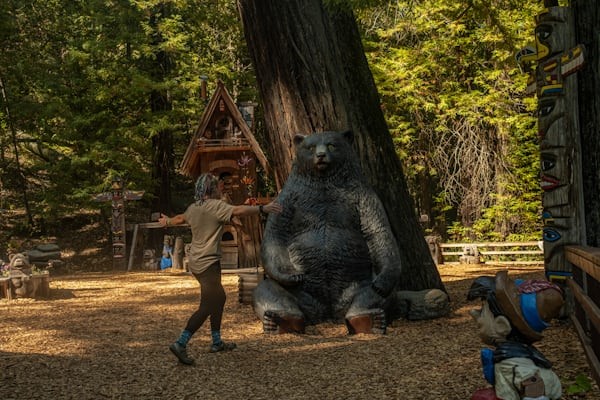Introduction:
Wood carving is a fascinating and age-old art form that has been used for generations in many different cultures. Bears are a common and significant choice among the many subjects that woodcarvers choose to create from a block of wood. Bears are popular topics for wood carving because of their strength, intelligence, and affinity for the natural environment. They are respected in many civilizations. This thorough guide will take you through the intriguing world of becoming proficient in the art of bear wood carving, covering design considerations, tools, techniques, and the rich cultural importance of these amazing works of art.
1. Understanding the Symbolism of Bears in Wood Carving:
- Cultural Significance: Bears are revered in many cultures across the world as symbols of bravery, strength, and a close bond with the natural environment. Bear wood carvings gain depth and significance from an understanding of the cultural background.
- Symbolism in other Civilizations: Examine how bears are viewed in other civilizations and use these interpretations to inform your artistic creations. The bear has many different roles and meanings in folklore, ranging from Native American to Scandinavian.
2. Essential Tools and Materials:
- Choosing the Right Wood: The right wood must be selected in order to successfully carve wood. Popular woods for bear carving include basswood, pine, and cedar; each has unique qualities that affect the finished product.
- Essential Tools for Novices: Describe the basic tools, including chisels, gouges, mallets, and safety gear, required for bear wood carving. Talk about how maintaining sharp tools is essential for accuracy.
- Advanced Instruments for Professional Carvers: Explore more sophisticated instruments that can improve the efficiency and intricacy of bear wood carving, including as rotary tools, power carvers, and detailed knives.
3. Bear Wood Carving Methods:
- Starting with the Fundamentals: Start by drawing a rough outline or template on the wood block. Talk about techniques including freehand drawing, stencil transfer, and carving with templates.
- Understanding Relief Carving: Gain insight into the subtleties of relief carving, which is a method of adding dimension to a flat surface by carving into it. Give detailed instructions on how to use this technique to create bear forms that are lifelike.
- In-the-Round Carving: Explain the more complex method of carving a bear in three dimensions, known as “in-the-round” carving. Talk about how the bear comes to life by using detail, symmetry, and proportion.
- Texturing and Fur Detail: Describe how to use gouging, stippling, and chip carving to give the bear a realistic fur texture. Discuss the difficulties and benefits of creating realistic fur patterns.
4. Design Considerations:
- Posing: Talk about the importance of striking a stance that enhances the bear’s symbolic meaning. The stance gives the carving more personality, whether it’s strolling, standing, or roaring.
- Expression and Emotion: Examine how bear wood carvings’ minute variations in face expressions can portray a range of emotions. The expression choice, which ranges from calm to ferocious, adds to the entire story.
- Adding Natural Elements: To improve the carving’s storytelling quality, think of including things from the bear’s natural environment, like fish, trees, or rocks. This gives the composition as a whole more depth and context.
5. Completing and Maintaining Your Wood Carving of a Bear:
- Sanding and Smoothing: Explain the significance of sanding and smoothing the carving in order to produce a polished and polished appearance. Talk about the many sandpaper grits and methods for getting a smooth surface.
- Painting and Staining: To improve the bear wood carving’s aesthetic appeal, consider painting or staining it. Talk about color selection, how to make realistic eyes and noses, and how to keep the wood’s inherent beauty.
- Applying a Protective Finish: To ensure the durability of their sculptures, provide carvers with guidance on the selection and application of a protective finish. Talk about the advantages of oils, waxes, and varnishes for protecting wood and enhancing its sheen.
6. Exhibiting Your Bear Wood Carvings
- Displaying Your Work: Give suggestions on how to display bear wood carvings, whether they are single pieces, a part of a bigger collection, or integrated into useful furniture.
- Entering Competitions and Exhibitions: Aspiring carvers are urged to think about taking part in exhibits and contests for wood carving. Emphasize the chances for growth, recognition, and networking that these gatherings can provide.
Conclusion
Gaining proficiency in bear wood carving requires a combination of talent, imagination, and a thorough comprehension of the cultural and metaphorical meaning of these amazing animals. The realm of bear wood carving offers countless opportunities for creative expression, regardless of skill level. Take on the challenge, refine your methods, and allow your imagination to lead the way to becoming an expert in this age-old art form.
Read More : wood carving for beginners

